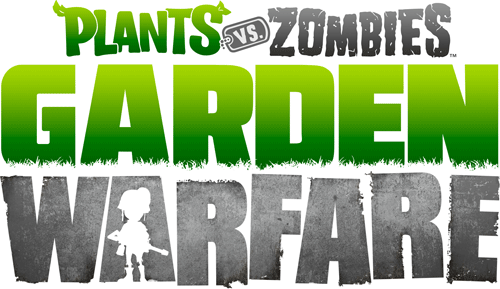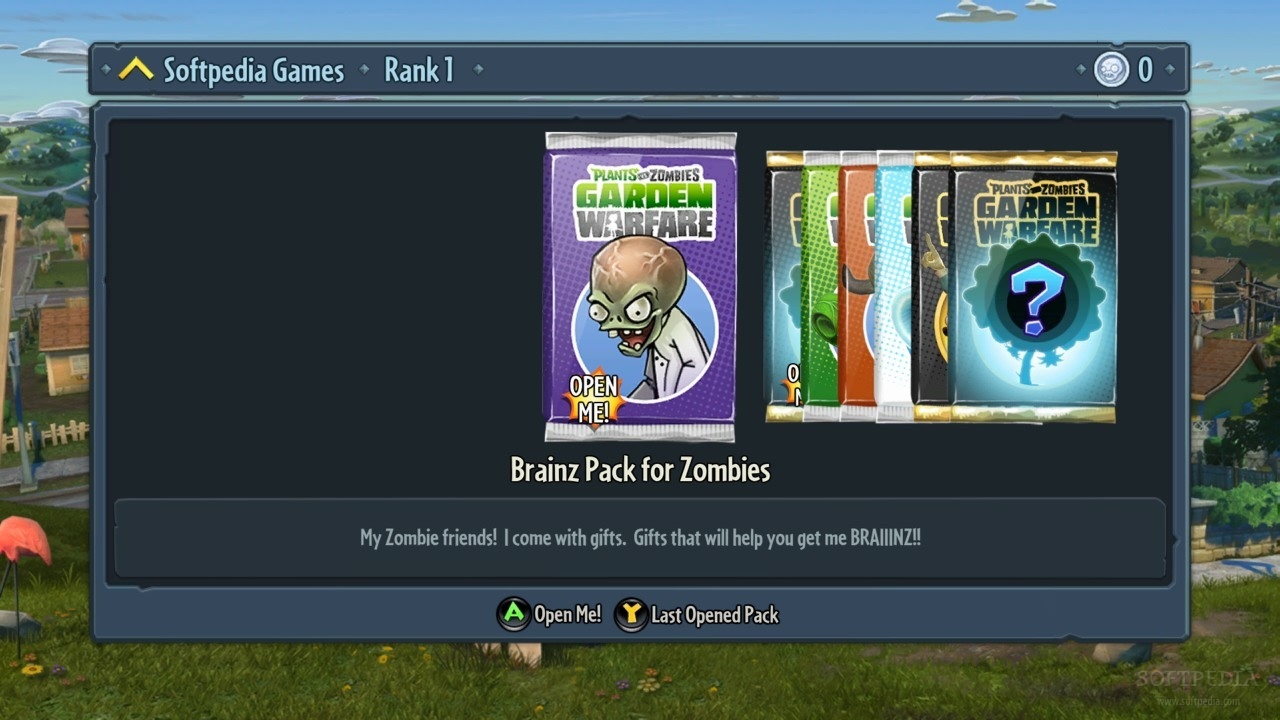
Plants vs. Zombies: Garden Warfare review
Plants vs Zombies: Garden Warfare Review

There are a multitude of third-person shooters out there on the market these days, they all tend to provide generally the same thing. Shoot here, shoot there, get killed and start all over again. What Plants Vs Zombies: Garden Warfare dose isn’t genre changing, your still doing the basic thing, but the way it presents itself is a much more adaptable and welcome change of perspective.
(I will not be noting on story this time as there is no general plot, its Plants vs Zombies I wouldn’t really expect a story from this)
Gameplay
The gameplay is where this game itself presents you with an interesting sense of interaction. There are three different modes to play at this point; Team Vanquish, Gardens and Graveyards and Garden Ops. With additional modes likely to be added in future DLC (Which will all be free by the way!)
Team Vanquish plays out like a general Team Deathmatch with a full lobby of 24 players. Similar to Battlefields ticket system you have to rank up a moderate amount of 50 vanquishes in order to be the winning team. Reviving team mates will detract a score from the enemy’s team. This is the simplest of all the game modes on the game, as it doesn’t really present much of an objective other than to rank up fifty kills against the enemy team.
Gardens and Graveyards plays out like most common capture modes in. With plants defending different garden zones from the enemy team of zombies who are out to try and capture the areas. Each map has seven different areas that zombies have to try and capture from the enemy plant team with the final area of the map requiring a special set of conditions to be done in order to be captured depending on which map it is set on. Both Zombies and Plants have the ability to spawn minor versions of their faction through the use of plant pots and burial mounds, with the choice of what spawns based on what cards you have to select from. It’s interesting to see how the little touches can really help win the game for either team. What I enjoyed was the sense of variety that each map would have during the final capture on this mode. One map would have zombies trying to stop the launch of a rocket which is set to hit Zomboss Mountain by applying dynamite to the support structures, while the other would have the zombies bringing down a sunflower lighthouse by destroying the stem and roots from inside.

Getting fired out of a cannon towards a sunflower lighthouse is one of the many final objectives during Gardens and Graveyards
Garden Ops is a more traditional mode which feels the most familiar to the traditional way Plants vs Zombies plays. Placed in a map, a group of four players will choose an area of the map to place their garden in and begin to set up a defensive perimeter against ten rounds of zombies. This mode offers the most challenge as well depending on what difficulty it is set on, with zombies being faster and taking and dealing out a lot more damage. Depending on where you place your garden you have a varied set of plant pots which you can utilise to help defend the perimeter around the garden. Rounds get harder as they progress with constant waves of zombies get pushed forward with a few special zombies thrown in to put the team off balance. It’s during the notorious Zomboss round where the true chaos begins to happen. As you and your team will face a three-reel slot machine which will decide what enemies or mini-bosses you will face during the round. It’s a nice sense of variety as you find yourself pitting against the challenges of zombie-generating tombstones, disco zombies, frost zombies and plenty more.
Each plant and zombie character that you can choose to play as in these modes all have something unique to offer. It’s not the case where there’s a plant-version of a zombie class or vice versa because each class feels unique. Peashooters are fast and powerful being able to deploy grenade beans and turn into Gatling peashooters through the use of their abilities. While Zombies have the all-star, a big jock-type class which carries a sports themed mini-gun and is able to charge into the battle full force and send any plants in its way flying into the sky. Cactus’s play out like snipers, with deadly accuracy and spike shots that can kill their targets quickly and efficiently; with added abilities to lay down mines and barriers to help fortify their position on the map. While Zombie Engineers can stride across the map on their jackhammers and send air drones into the air to support their team from above. While there are default sets to these characters, through the use of sticker collecting you can form yourself a new variant for your character to have. Such an example is the Marine Biologist variant of the Zombie Scientist. This variant allows the Scientist to wield a dolphin gun and is much more deadly at close range. There are plenty of variants for each class which makes the game a lot more interesting with such a diverse set of class variants to choose from.
Control-wise is where the game feels it’s weakest. You find yourself in a rather based position when thinking about the fact you can’t run any faster than the game allows you. As well as that you are locked on a set aiming cursor which often feels slow and unreactive, you can zoom in using the left-trigger but it proceeds in a manor so slow that you find it pointless unless you’re playing as classes like Cactuses or Scientists which need to zoom in to make their shots count, You control your abilities through the use of three buttons, the Right and Left Bumper and the Y button and you also use the d-pad to apply gestures onto your characters. While gestures may seem like a nice way to express your character or give command signals off, I found it often unnecessary as you barley find yourself using it. Also the fact that have to unlock more gestures is often a cheap way of making you pay to find a gesture to say thanks with your character.
I should also note the ranking and purchasing mechanics on the game. The Purchase system basis itself off a lot of EA’s in-game market systems. You have a range of card packs to buy from, with the rarity of card you can find in each pack varied depending on which pack you buy. In a pack you have a chance of been given zombie and plant consumables to use during Garden Ops and Gardens and Graveyards. As well as that you can receive stickers to use to unlock new classes and a whole range of customisation for your character. Depending on which card pack you bought the level and rarity of these card will vary. Each pack costs genially more depending on the contents that they are likely to contain, with the cheapest being 1,000 coins and the highest being 10,000. Ranking up each character isn’t done through the gaining of experience. It’s done through the completion of specific challenges set through a list. After each challenge is completed you are granted a star and this star will go towards progressing to the next level of your character. After you reach a distinct level with your character you receive a free booster pack for that character which provides them with the random skins, stickers and gestures. It’s a nice change considering most online games require you rank up experience in order to level, but here it’s more about pushing the capabilities of your character to match the challenges. Although I’ll admit some of the challenges are often repetitive and sometimes un-necessary.

The in-game store basis itself of many of EA’s other in game stores, with a random selection of stuff with rarer items the more expensive the pack.
Presentation
It’s in Garden Warfares artistic presentation where the game really gives off an impression. Most online shooters these days try to push forward a much grittier and serious style of presentation. With the likes of Gears of War, Call of Duty and Battlefield all taking on a serious style. Garden Warfare knows that the main charm of the game is to not take itself seriously and provide a very bright and cartoonish look to the game.
Graphically the Xbox One meets the superior mark with this title as it has a lot more detail and a nicer resolution. I’m not saying the Xbox 360 versions bad, as it does provide a decent representation of the graphics but it became a common occurrence on the 360 version in which textures would fail to load and the environments would look blocky and unrenderd. These type of occurrences can draw away your experience with the game as you are constantly reminded that it can’t manage to render properly.
The environments and character design are by far the most creative and exceptional part of this games presentation. Each plant and zombie feels interesting and looks unique in their own sense. Sunflowers always have a cheery smile on the faces, no matter what scenario there in. While the zombie scientist has a rather crazy and sinister look on their face which makes you question what the hell they’re thinking. It’s with added customisation and abilities that the presentation of these character can be elevated to your own vision. Popcap really pushed out a massive amount of customisation with this game as each character has nearly hundreds of items to be used to customise with and it really helps you create a unique design to your plant or zombie.

There is a incredible amount of ways to customise your character in way that makes them unique and often hilarious to look at.
Environments and Maps are also have a very quirky look to them. As the design and theme of each map is often unique and refreshing to look at. One map basis itself within a suburban area, with houses and flats place all around. Another is set in a pirate bay called Port Scallywag with the main battle area being a pirate ship with two levels to it. With each map offering different paths and strategies it’s a nice way for each side to take advantage and lay down some tactical manoeuvres on the enemy. On Port Scallywag a team might be busy fighting on the top deck while a small group of the other team can sneak up through the bottom deck and ambush them. For such a simple game it’s map design has aspects to be praised, even so the range of maps is rather limited at this current time. However the issue of texture pop-in can cause some of these environments to suffer in quality from time to time.
Overall Opinion and Verdict
Plants VS Zombies: Garden Warfare is a very fun and enjoyable game that offers a nice amount of content to allow anyone to enjoy it. Transitioning from a top-side, strategy arcade title into a third-person shooter might seem like a very hard thing to pull off, but Garden Warfare manages to make the transition rather smoothly. Granted it doesn’t come without some faults; the controls, texture pop-in and the limited set of modes during the beginning makes the game feel stiff and hollow. Although with the promise of all future DLC being free it does make up for the limited set of game modes. But despite these faults Garden Warfare is still fun and addictive to play, with plenty of bright and colourful visuals, fun co-op, easy to use classes with expansive customisations it does hit the general mark of a fun third-person shooter. Just don’t expect anything more, it’s not a genre-changer, just a nice adaption into it.
Rating: 3/5
Categories: Reviews
0 Comments
This post has been left all alone with no comments. Don't leave it lonesome - give it some company with a comment.